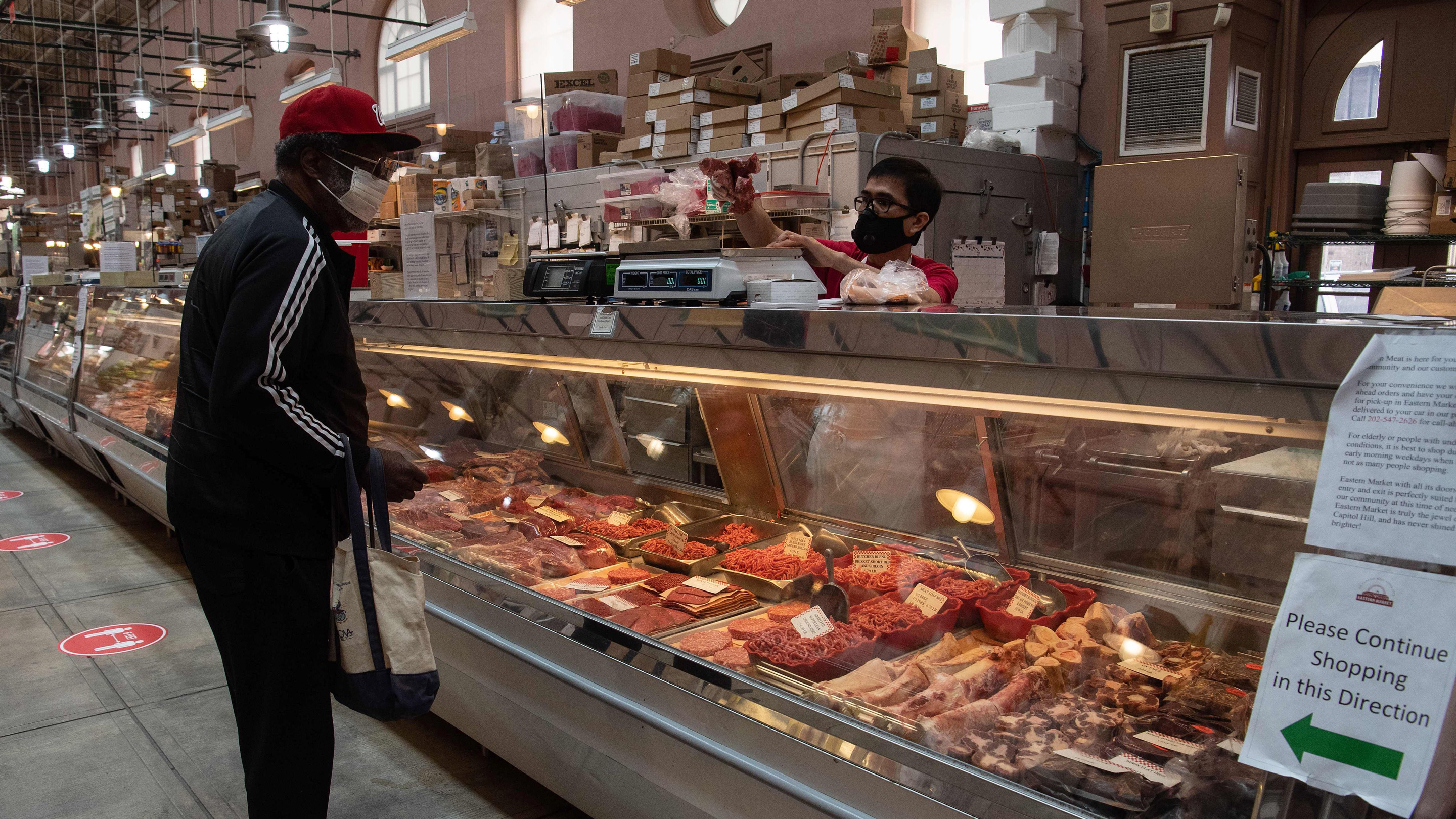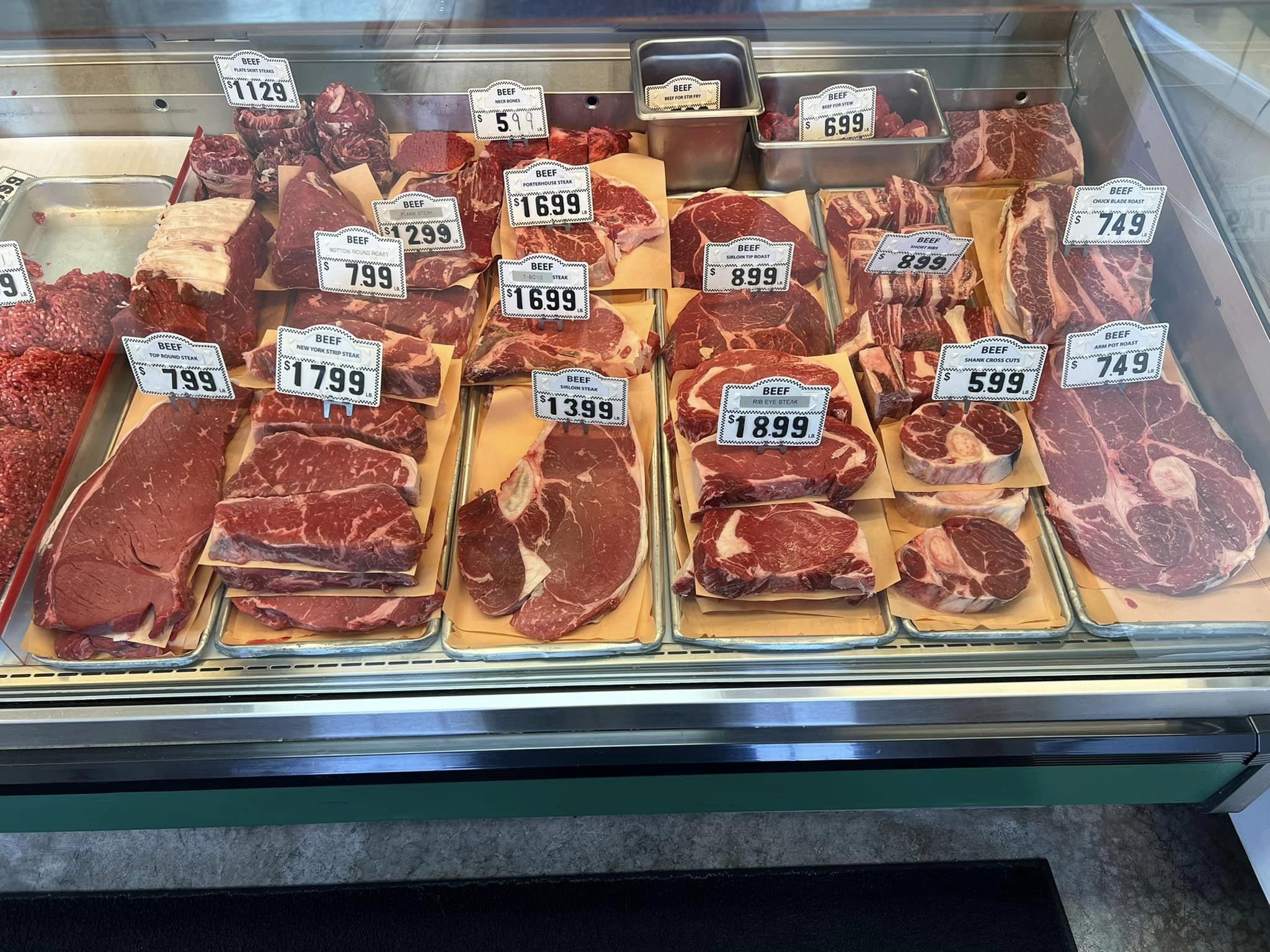Bagley Farms Meat Market: Bringing Freshness to Your Table
Bagley Farms Meat Market: Bringing Freshness to Your Table
Blog Article
Your Comprehensive Resource for Specialist Tips on Browsing the Meat Market Scene and Making Informed Purchases
Browsing the globe of meat getting can frequently really feel like a complicated puzzle, with different cuts, qualities, and tags adding layers of ins and out to the decision-making process. For those seeking to make informed selections and boost their cooking experiences, recognizing the nuances of the meat market scene is vital. From understanding the difference between prime and selection cuts to untangling the mysteries behind different accreditations, a riches of specialist pointers awaits those ready to unravel the keys of the butcher's domain name. By understanding the art of picking fresh, high quality meat and discovering to engage successfully with butchers, people can not only boost the tastes on their plate but likewise make certain choices that line up with their preferences and worths.
Comprehending Different Cuts and Qualities
When it pertains to buying meat, understanding the differences between numerous cuts and qualities is crucial for making notified choices at the marketplace. The cut of meat describes the certain muscular tissue team where the meat is sourced, while the grade is a quality classification based upon aspects like marbling, inflammation, and maturation of the animal. Prime quality meats have the highest degree of marbling, making them tender, juicy, and flavorful, but they also often tend to be more costly. Option grade meats are slightly leaner with less marbling however still provide good quality for a lower price point. Select quality meats have the least marbling, making them leaner yet potentially less tender. It is necessary to think about the cooking technique when selecting a cut and grade of meat-- as an example, well-marbled cuts like ribeye are excellent for grilling, while leaner cuts like sirloin might be better fit for toasting or braising. By recognizing the distinctions in between grades and cuts, consumers can make more educated choices when purchasing meat.
Picking Fresh and Quality Meat
To make certain optimal taste and safety and security in your dishes, it is crucial to carefully choose fresh and high quality meat when shopping at the market. When choosing fresh meat, try to find cuts that have a vivid shade, company appearance, and are not slimed however damp. The shade of the meat must specify to the type you are buying; for instance, beef needs to have a bright red color, while pork needs to be extra pinkish. Prevent meat with any off-smells, staining, or excessive fluid in the packaging, as these can be indications of spoilage.
In addition to look, think about the source of the meat. Choose for products from reputable providers known for their top notch standards. Organic, grass-fed, or pasture-raised options might additionally suggest better quality meat. Looking for ideal labeling, such as USDA grades or qualifications, can further ensure you of the meat's quality and safety. By being watchful in your selection process, you can delight in delicious and secure meals made from fresh, top notch meat.
Decoding Labels and Certifications
Comprehending the labels and certifications on meat products is essential for making informed choices about the quality and origin of the meat you purchase. When browsing the meat market scene, it's important to look for tags such as "USDA Licensed Organic," which suggests that the meat was created following rigorous natural criteria without the use of artificial pesticides, prescription antibiotics, or hormones.


Accreditations like "Animal Well-being Authorized" or "Licensed Humane" represent that the pets were elevated in gentle problems, with accessibility to outside spaces and ethical treatment. On the other hand, "Non-GMO Task Verified" shows that the meat originates from pets that were not fed genetically customized organisms. By understanding these labels and qualifications, customers can make more honest and sustainable choices when acquiring meat products.
Engaging With Butchers for Assistance
Making notified selections regarding the meat you acquire can be additionally boosted by looking for assistance from skilled butchers visit this page that possess useful expertise concerning various cuts, top quality, and sourcing methods. Butchers are experienced experts that can provide insights right into the ideal cuts of meat for details meals, recommend alternate choices based upon availability or spending plan, and deal advice on proper handling and storage to make the most of freshness and flavor.
Engaging with butchers allows consumers to ask inquiries concerning the resource of the meat, including whether it is in your area sourced, natural, grass-fed, or sustainably elevated. By promoting a relationship with a trusted butcher, customers can obtain a much deeper understanding of the meat they purchase, guaranteeing that it lines up with their worths and choices.
Moreover, butchers can share cooking suggestions, dish recommendations, and also butcher unique cuts to meet private choices. Their proficiency expands beyond just offering meat; they can assist in meal planning, section sizing, and offer recommendations on complementary components to produce all-round and delicious meals - Bagley Farms Meat Market. By leveraging the understanding and experience of butchers, customers can make more informed choices when navigating the meat market scene

Maximizing Worth and Budgeting
When considering making best use of worth and budgeting in the meat market, it is important to examine the price per offering and explore economical cuts that still use wonderful taste and top quality. By comprehending the price per serving, consumers can make informed decisions about which cuts of meat supply the very best value for their budget. One way to take full advantage of worth is to acquire bigger cuts of meat and portion them at home, conserving cash compared to pre-cut choices. In addition, deciding for much less prominent cuts, such as chuck or sirloin, can supply considerable savings without endangering on preference or tenderness when prepared correctly.
One more technique for budget-conscious buyers is to capitalize on sales, price cuts, or mass acquiring choices. Getting in bulk and cold sections for later use can aid reduce general prices per offering. It is likewise valuable to develop a connection with neighborhood butchers or meat vendors, as they might provide unique offers or discount rates to dedicated consumers. By bearing in mind price, checking out alternate cuts, and leveraging price cuts, consumers can extend their meat budget plan without sacrificing top quality.
Final Thought
Finally, understanding the various cuts and grades of meat, picking fresh and high quality items, deciphering tags and certifications, seeking support from butchers, and optimizing value and budgeting are necessary actions for navigating the meat market scene and making informed acquisitions. Bagley Farms Meat Market. By adhering to these specialist tips, consumers can make well-informed decisions when purchasing meat and ensure they are obtaining the very best value for their cash
When it comes to acquiring meat, recognizing the distinctions between various cuts and qualities is important for making notified choices at the market. The cut of meat refers to the specific muscle team useful link from which the meat is sourced, while the grade is a top quality designation based on elements like marbling, inflammation, and maturity of the animal. It's important to consider the food preparation technique when choosing a cut and grade of meat-- for instance, well-marbled cuts like ribeye are terrific for barbecuing, while leaner cuts like sirloin might be far better matched for toasting or braising.Recognizing the tags and certifications on meat products is essential for making educated decisions concerning the high quality and origin of the meat you buy. When browsing the meat market scene, it's vital to check that look for labels such as "USDA Qualified Organic," which shows that the meat was generated adhering to rigorous natural requirements without the usage of artificial chemicals, antibiotics, or hormones.
Report this page